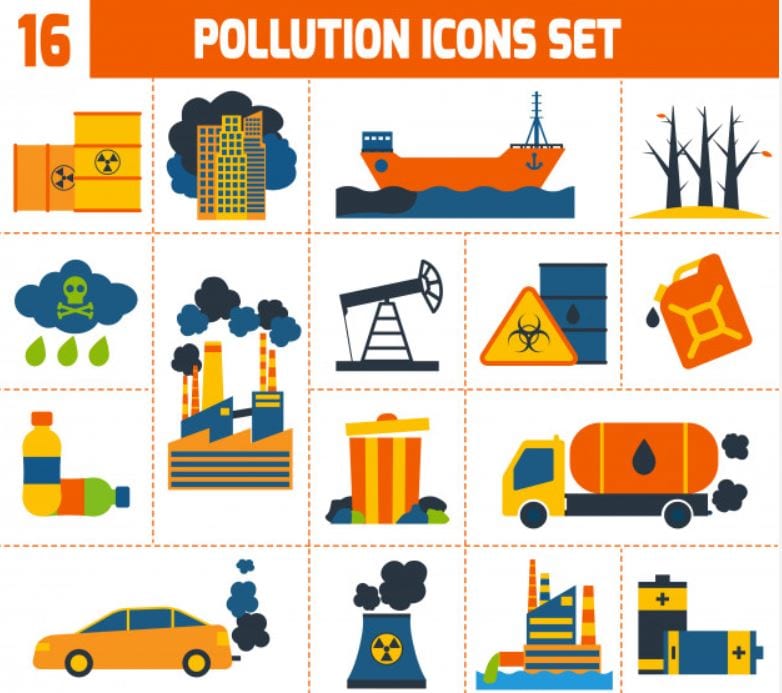
Pollution levels are rapidly increasing across the globe. Corruption in all its forms is harmful and hurts human life, plant life, animal life and the surroundings, in general. In this assignment, we pay close attention to air pollution and its adverse effects. Along with health problems, air pollution may also result in corrosion of buildings and other infrastructure, lousy odour, compromised visibility, harm to vegetation, etc. We also seek to understand why monitoring of various forms of emissions is necessary and how such measures can help to improve the present scenario.
Reports suggest that there is a strong relationship between the levels of air pollution and its impact on health. Nitrogen dioxide and particulate matter are two of the main components of air pollution. Life expectancy and levels of particulate matter in the air also have a secure connection. It means that the average time an organism is expected to live to be longer when the levels of particulate matter present in the air are lower, and vice versa. Higher levels of particulate matter cause an increase in chronic obstructive pulmonary disease, a decrease in lung function, increase in cardiopulmonary and cardiovascular diseases, increase symptoms of respiratory problems and mortality or death.
Australia needs to ensure that air pollution levels remain in check to prevent such hazardous effects on life and the environment.
Recent studies suggest that particulate matter has a carcinogenic effect on human health. Over the years, the content of particulate matter has been continuously increasing in the air, resulting in drastic deterioration of health across the world. As more nations turn towards industrialisation and increase in the number of vehicles resulting in more massive amounts of particulate matter being airborne, there has been a simultaneous increase in respiratory problems, non-communicable diseases and cardiovascular diseases. In the case of infants, research led to the establishment of a strong between air pollution and low weight of infants at birth, delay in development and an increased risk of infection.
Moreover, people should take into account that the previously set standards by the WHO and other organisations for acceptable levels of air pollution are no longer relevant. It is true because countries that keep to the pollution levels set by the organisations also register many cases of cardiac, pulmonary and respiratory disorders. It suggests that the standards are set very high and that even low levels of air pollution can cause severe damage to health. Latest reports indicate that in Australia 70% of the coronary heart diseases, between 27 – 28% strokes, between 1% – 5% lung cancer and chronic obstructive pulmonary diseases are a result of air pollution.
The first and most effective preventive measure is to ensure that the government introduces appropriate traffic laws and regulations. It includes constant monitoring and checks on the levels of emission by the vehicles.
Regular checks and assessments should be mandatory to make sure that individuals take their cars for regular servicing. It will help to prevent cases of pollutant emission. The vehicles that are damaged and laying down in the garage for years need to remove with the help of auto recyclers that pay for cars.
Campaigns and advertisements should be promoted to encourage people to walk, share transport and use electric vehicles or bicycles. It will make a significant difference to the environment and improve health at the same time. The current recycling crisis faced by Australia and the country is regularly trying to get rid of those situations in future and sorting out by the ways of tackling it.
Children and adults should also stay away from industrial sites and other regions where the air contains pollutants.
Specific methods of farming can also prove to be harmful to the environment. The slash and burn method of agriculture and forest fires increase the number of pollutants and particulate matter in the air. Necessary measures should be taken to prevent such mishaps from happening.
Industrialists must ensure that their method of production is safe and as environment-friendly as possible. They should make arrangements to reduce the emission of pollutants, use raw materials that emit fewer pollutants and use a product that does not permit careless disposal of the waste matter into the air.
Further, the government, industries and the general public needs to work in coordination to reduce air pollution and limit its harmful effects. Thus, constant monitoring is essential.